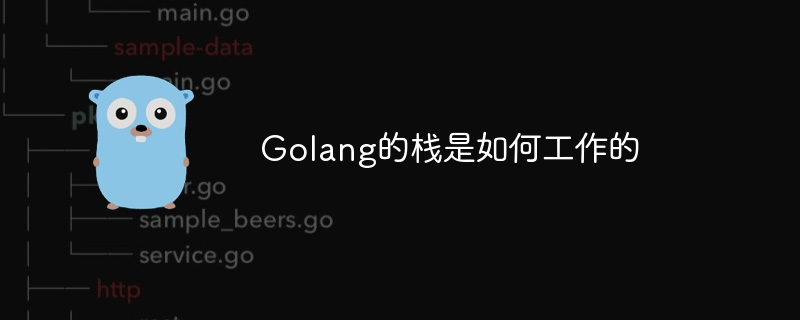

How Golang’s stack works
In computer science, the stack is a commonly used data structure. The stack is a kind of data with first-in-last-out characteristics. structure. In Golang, the stack is usually used to store information such as local variables, parameters, and return addresses of function calls. In this article, we will introduce in detail how the Golang stack works and demonstrate it through specific code examples.
First, let us take a look at the basic implementation principles of the stack in Golang. In Golang, each goroutine has its own stack. The size of the stack is fixed (usually 2MB) and grows dynamically at runtime. When a function is called, the function's local variables, parameters, function return address and other information will be pushed onto the stack. When the function completes execution or encounters a return statement, this information will be popped off the stack.
Next, we use a specific code example to demonstrate how the stack works in Golang:
package main
import "fmt"
func factorial(n int) int {
if n == 0 {
return 1
}
return n * factorial(n-1)
}
func main() {
result := factorial(5)
fmt.Println("Factory of 5 is:", result)
}In the above code, we define a recursive function factorial to calculate the factorial. When we call factorial(5), the program will perform the following steps:
factorial(5) is called, n is 5, and 5 is entered stack. factorial(4) is called, n is 4, and 4 is pushed onto the stack. factorial(3) is called, n is 3, and 3 is pushed onto the stack. factorial(0) is called, n is 0, and the recursion ends. factorial(0)After the calculation is completed, pop the stack and return the value 1; factorial(1)After the calculation is completed, pop the stack and return the value 1; and so on, until the final result is returned to the main() function. Through the above examples, we can see how the stack works in Golang. The characteristics of the stack enable the function calling process to proceed smoothly, while also ensuring the safety and isolation of local variables. Understanding how the stack works is very important for understanding concepts such as function calls and recursion. Hope this article is helpful to you.
The above is the detailed content of How the Golang stack works. For more information, please follow other related articles on the PHP Chinese website!




